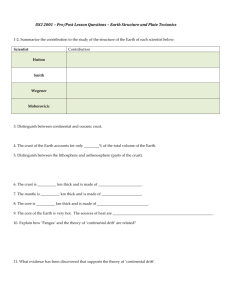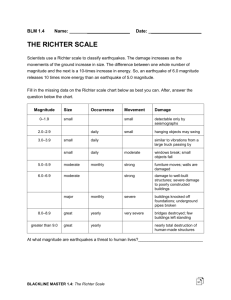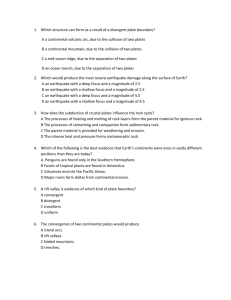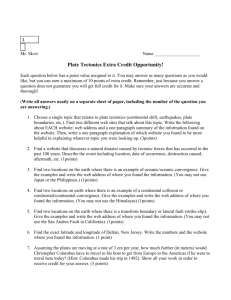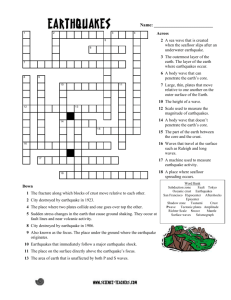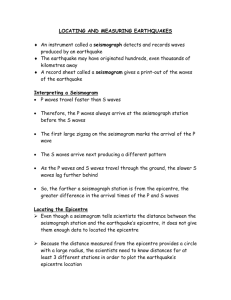Chapter 11
advertisement
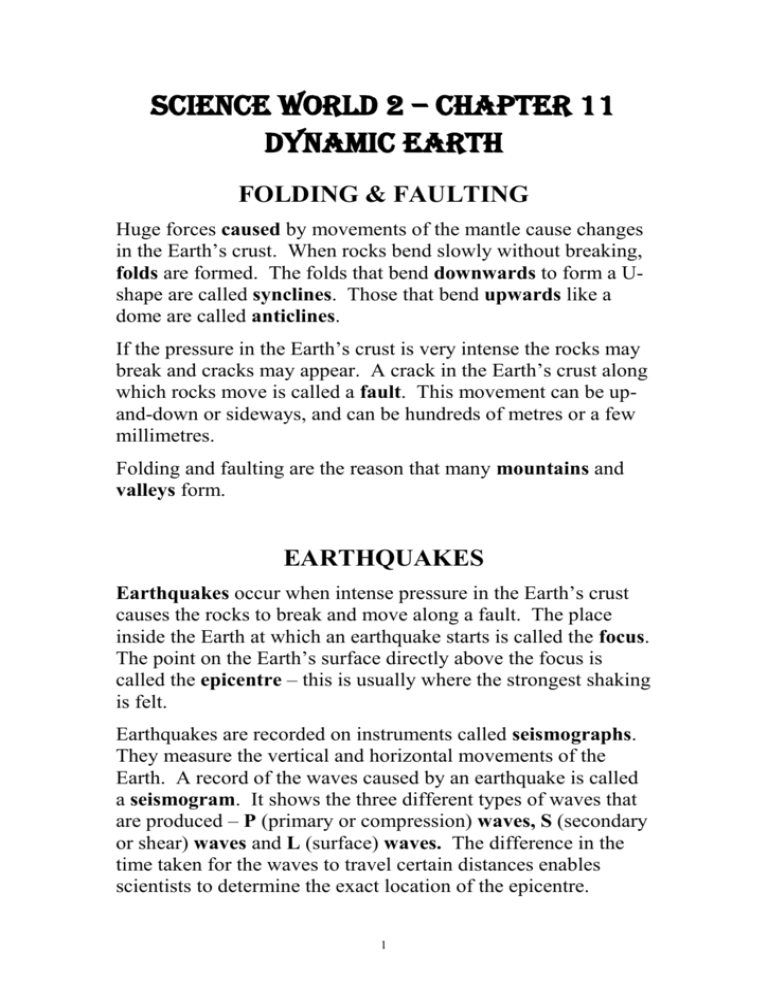
science world 2 – chapter 11 dynamic earth FOLDING & FAULTING Huge forces caused by movements of the mantle cause changes in the Earth’s crust. When rocks bend slowly without breaking, folds are formed. The folds that bend downwards to form a Ushape are called synclines. Those that bend upwards like a dome are called anticlines. If the pressure in the Earth’s crust is very intense the rocks may break and cracks may appear. A crack in the Earth’s crust along which rocks move is called a fault. This movement can be upand-down or sideways, and can be hundreds of metres or a few millimetres. Folding and faulting are the reason that many mountains and valleys form. EARTHQUAKES Earthquakes occur when intense pressure in the Earth’s crust causes the rocks to break and move along a fault. The place inside the Earth at which an earthquake starts is called the focus. The point on the Earth’s surface directly above the focus is called the epicentre – this is usually where the strongest shaking is felt. Earthquakes are recorded on instruments called seismographs. They measure the vertical and horizontal movements of the Earth. A record of the waves caused by an earthquake is called a seismogram. It shows the three different types of waves that are produced – P (primary or compression) waves, S (secondary or shear) waves and L (surface) waves. The difference in the time taken for the waves to travel certain distances enables scientists to determine the exact location of the epicentre. 1 THE RICHTER SCALE Scientists use seismograms to work out the strength or magnitude of an earthquake. The magnitude of an earthquake is how much energy it has, and is measured on a scale from 0 to 10. This scale is called the Richter scale, after its inventor, Charles Richter. On the Richter scale, the intensity or energy of an earthquake increases tenfold for a single increase in magnitude. For example, an earthquake of magnitude 6 causes 10 times more ground motion than one of magnitude 5, and 100 times more than one of magnitude 4. (Look at “The Richter scale” on p 246) CONTINENTAL DRIFT & PLATE TECTONICS Back in 1915, Alfred Wegener suggested that continents such as Africa, South America, Australia, Antarctica and India were joined about 200 million years ago. He proposed that this ‘supercontinent’, called Gondwana, gradually broke apart and the continents separated. Wegener’s hypothesis was called continental drift. (Look at Figure 34 on p 248) The continental drift hypothesis has since been modified. Scientists now believe that giant sections or plates of crustal rock move over the Earth’s surface. This movement of the Earth’s plates is called the plate tectonic theory. WHAT HAPPENS WHERE PLATES MEET? The Earth is made of two different types of plates – oceanic and continental plates. When an oceanic plate collides with a continental plate, earthquakes and volcanoes are produced along this line (often called a fault line). Colliding continental plates explain the formation of mountain ranges such as the Himalayas. (Look at all Figures on p 250 and 251) 2 SPELLING WORDS No. 1 2 3 4 5 6 7 8 9 10 11 12 13 14 15 16 17 18 19 20 EASY birth death interior fault ranges buckled brittle valley sideways pressure focus primary shear surface strength effects plate collapse drift boundary HARD dynamic explosion eruption composition mountain syncline anticline horizontal earthquake devastation epicentre seismograph seismogram secondary compression intensity magnitude Richter continental tectonic 3



